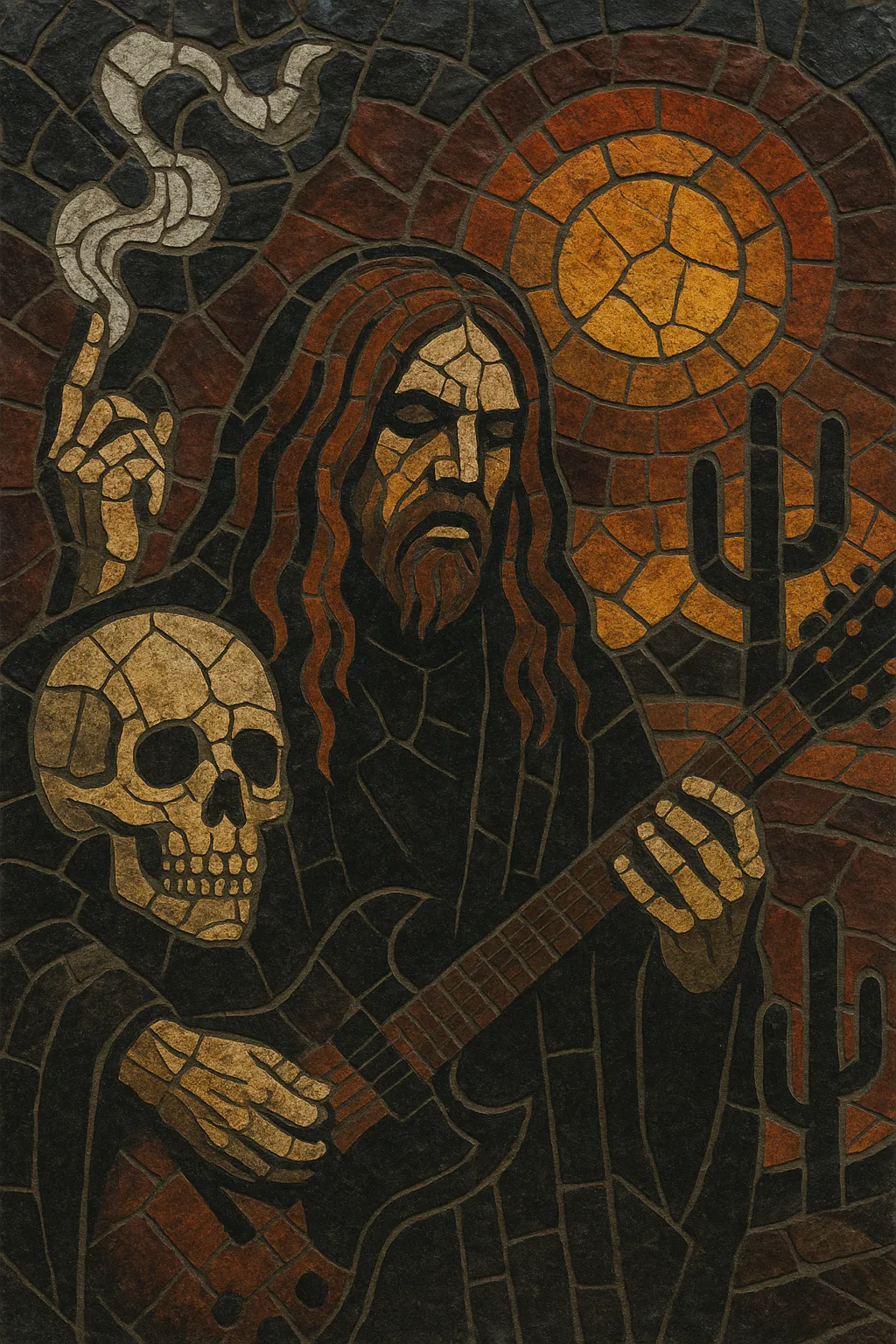Stoner metal is a heavy, riff-centered offshoot of doom metal that fuses the low-and-slow weight of early Sabbath with the hazy psychedelia and fuzz-drenched tones of 1970s hard rock. It emphasizes down-tuned guitars, thick midrange, and hypnotic, groove-forward drumming, often evoking a desert-heat mirage of sustained riffs and feedback.
Compared to stoner rock, stoner metal leans darker and heavier, with a doomier pulse, longer song structures, and an almost trance-like fixation on repetition. Lyrics frequently explore cosmic wanderlust, occult imagery, apocalyptic visions, and cannabis counterculture, while production tends to favor warm, analog saturation and room-heavy drum sounds.
Stoner metal traces its roots to the heaviest edges of 1970s hard rock and early heavy metal. The massive, blues-rooted riffs and minor-key dread of Black Sabbath, the fuzzed-out excess of acid rock, and the cosmic sprawl of psychedelic rock all formed the template. In the 1980s, doom metal codified the slow tempos and morbid grandeur, while underground scenes incubated a taste for raw, amp-forward production and extended riff hypnosis.
The genre cohered in the early-to-mid 1990s, especially in the United States. The Palm Desert generator party scene fostered a heavier, dust-blasted take on psychedelia and doom. Sleep distilled the style into monolithic, down-tuned riff epics, while Kyuss and Fu Manchu brought desert-rock momentum and blown-speaker fuzz. In the UK, Electric Wizard steeped the approach in tar-black doom and occult menace, giving the sound one of its most influential aesthetics.
Through the 2000s, stoner metal diversified and spread. High on Fire injected Motörhead-like drive into a molten doom core. Orange Goblin and Acid King sharpened the genre's focus on groove and fuzz saturation. Independent labels and festivals (such as Rise Above Records releases, and gatherings like Roadburn) amplified global connectivity, seeding robust scenes across Europe and the Americas.
A worldwide network of bands, micro-labels, and festivals (e.g., Desertfest) cemented stoner metal as a durable underground pillar. Production values often nod to 70s warmth while embracing modern low-end heft. Cross-pollination with sludge, psych, and even shoegaze textures yielded new hybrids, but the core remains: down-tuned, riff-obsessed metal that worships the amp as much as the song.


